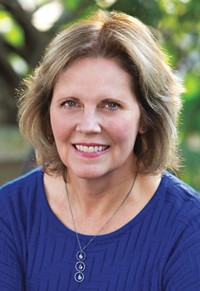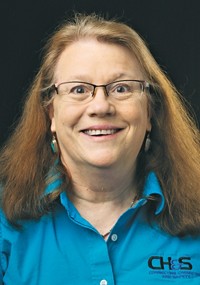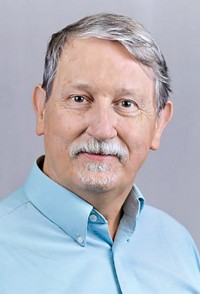Advertisement
Grab your lab coat. Let's get started
Welcome!
Welcome!
Create an account below to get 6 C&EN articles per month, receive newsletters and more - all free.
It seems this is your first time logging in online. Please enter the following information to continue.
As an ACS member you automatically get access to this site. All we need is few more details to create your reading experience.
Not you? Sign in with a different account.
Not you? Sign in with a different account.
ERROR 1
ERROR 1
ERROR 2
ERROR 2
ERROR 2
ERROR 2
ERROR 2
Password and Confirm password must match.
If you have an ACS member number, please enter it here so we can link this account to your membership. (optional)
ERROR 2
ACS values your privacy. By submitting your information, you are gaining access to C&EN and subscribing to our weekly newsletter. We use the information you provide to make your reading experience better, and we will never sell your data to third party members.
Comment
Leading the chemical safety landscape
by Ralph Stuart, Chair, ACS Committee on Chemical Safety
July 8, 2018
| A version of this story appeared in
Volume 96, Issue 28
The American Chemical Society has long advocated for best practices for laboratory chemical safety in academic institutions. Since its creation in 1963, the ACS Committee on Chemical Safety (CCS) has served as a resource to other ACS units on matters related to chemical safety and health. CCS has, for example, produced a number of safety guidance resources, which are available at www.acs.org/safety.

The committee also works with other organizations to promote safety. CCS contributed to the National Academies of Sciences, Engineering & Medicine report “Safe Science: Promoting a Culture of Safety in Academic Chemical Research” and the Association of Public & Land-grant Universities’ “Guide to Implementing a Safety Culture.”
The committee exceeded expectations in response to the U.S. Chemical Safety Board’s recommendation to develop guidance to support risk assessment in chemical research labs. In 2015, the committee’s Hazard Identification & Evaluation Task Force published the guide “Identifying and Evaluating Hazards in Research Laboratories” and developed hazard assessment tools (www.acs.org/hazardassessment).
And this February, at the request of ACS President Peter K. Dorhout, CCS partnered with the Division of Chemical Health & Safety to organize the first ACS Safety Summit. The goal of the summit was to identify concrete strategies to advance ACS’s strategic value of “professionalism, safety, and ethics.”
At the summit, a group of 29 stakeholders, including ACS members and representatives of sister organizations, met to delve more deeply into the connections between ACS strategy and key chemical safety issues. Areas of discussion included laboratory chemical safety information, partnerships and communities that would empower the development of chemical safety skills, laboratory safety education needs, and communication strategies about the importance of risk assessment in chemical safety practice and policies.
Dorhout’s report on the summit appeared in C&EN earlier this year, and I am pleased to report that significant work has begun on moving the ideas discussed at the summit forward. For example, in June, the CCS’s Safety Advisory Panel met to further explore several key issues:
▸ What chemical safety information tools are needed to better inform laboratory-scale risk assessment in higher education teaching and research laboratories?
▸ What are the policy aspects of the need for public chemical safety information?
▸ How can laboratory safety practices inform and be informed by the “systems thinking” approach to chemistry emerging in the green chemistry community?
The panel met with chemical information and environmental health and safety experts, ACS public policy and Green Chemistry Institute staff, and potential partners from other organizations. We identified key strategies on these topics that can be further advanced by ACS committees, technical divisions, and staff.
The panel also discussed how to integrate green chemistry into the RAMP safety paradigm to support educating chemists in the design of safer products and processes. RAMP is an acronym for the four elements of the chemical safety process: Recognize the hazard, assess the risk, minimize and manage risk, and prepare for emergencies.
Advertisement
In addition to the work of the summit, many other activities related to academic chemical safety are under way within ACS:
▸ The Division of Chemical Health & Safety (CHAS) has organized a full-day presidential symposium at the fall ACS national meeting in Boston that will discuss the outcomes of the summit in more detail than is possible in the written reports.
▸ CHAS has released a short video highlighting the importance of laboratory risk assessment on its website. Production of this video was made possible by the Technical Division Innovative Project Grant program.
▸ The ACS Office of Chemical Safety worked with the U.S. Consumer Product Safety Commission and ACS Productions to develop a video about the hazards of flammable liquids, particularly concerns about the flame-jetting phenomenon associated with the rainbow demonstration.
▸ Members of ACS governance, including ACS Immediate Past-President Allison Campbell, and staff participated in the University of California’s lab safety workshop in Chicago, which ACS cosponsored.
▸ The CCS Communications Subcommittee met with ACS and C&EN staff to discuss elements of a communication strategy that ACS can implement to improve the public’s understanding of chemical risks and how they are best managed.
Thanks to the ongoing support of several members of the ACS presidential succession over the past five years and the dedicated service of the members of the safety community, ACS has become an important leader in the chemical safety landscape. The safety strategy that has emerged from this year’s summit will continue to enhance the society’s role and raise the bar for safety practices across the scientific enterprise.
If you have ideas or comments about ways you can participate in this work, please contact me at safety@acs.org. I look forward to your help in this effort!
Views expressed are those of the author and not necessarily those of C&EN or ACS.





Join the conversation
Contact the reporter
Submit a Letter to the Editor for publication
Engage with us on Twitter